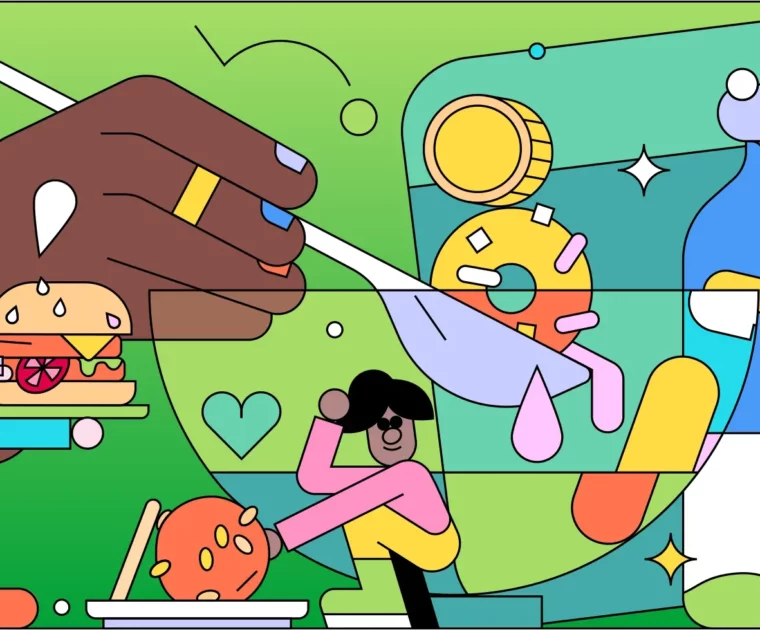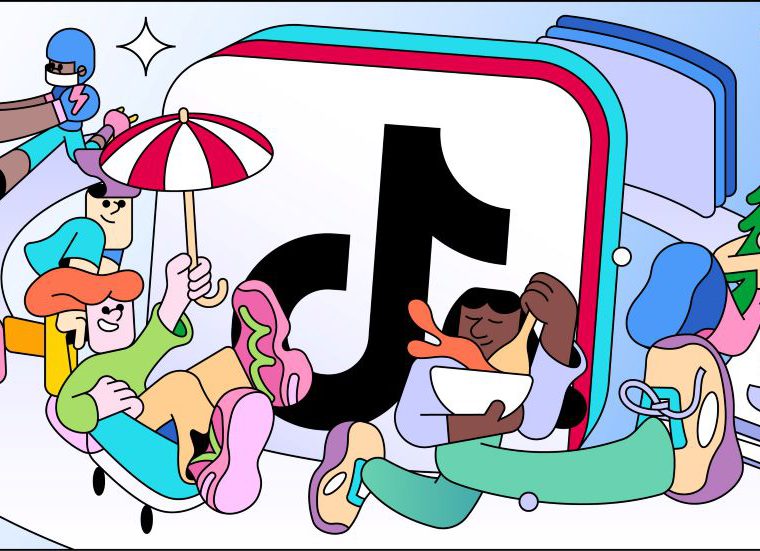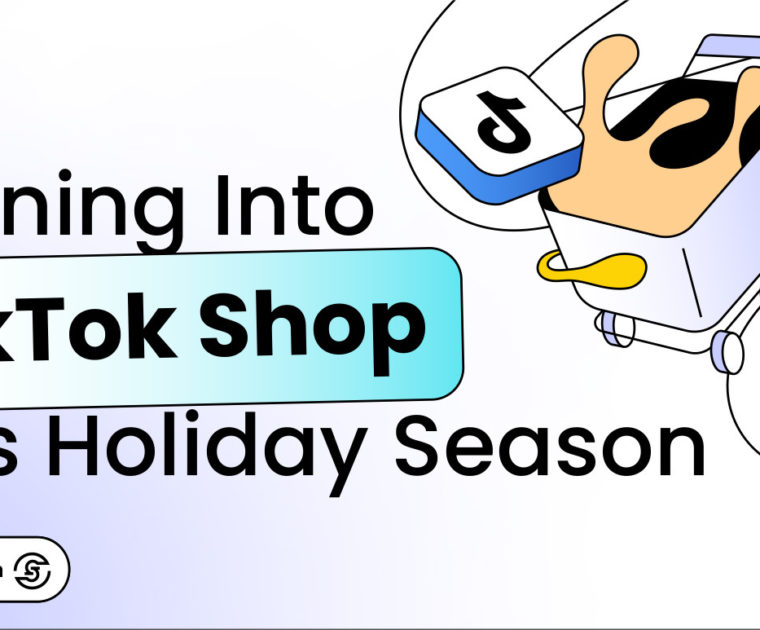Have you ever wondered how you end up on TikTok watching a 10-minute deep dive into vintage sneakers when all you wanted was a quick laugh? Or, in my case, how an innocent (dare I say, naive) plan to spend five minutes checking analytics spirals into a full-blown, twenty-minute rabbit hole of algorithm-approved shenanigans? That’s the magic of the Interest Graph at work. 🎯
Social media isn’t about keeping up with your high school friends anymore. Well, it’s not just about that. Platforms like TikTok and YouTube have turned into full-on discovery engines, using algorithms to serve up content that feels like it was made just for you—because it kind of was.
And this isn’t just changing how we spend our time online—it’s completely shifting how brands connect with their audiences. In this article, we’re diving into how the Interest Graph is reshaping discovery, influencing consumer behavior, and what it all means for marketers who want to stay ahead of the curve.
The Evolution of Discovery
Remember when your social media feed was basically just updates from friends and a bunch of baby pictures? (Simpler times, right?) That was the Social Graph doing its thing—prioritizing your connections and who you followed.
It’s why Gen Alphas exchange Roblox handles in the schoolyard, and young adults get one another’s Instagram and Snapchat handles instead of phone numbers. Because the features in a social media platform that run on the social graph (i.e. Stories, DMs) are great at helping you build and deepen connections. For a while that’s what social media was all about – your personal connections.
Enter the Interest Graph—the social media algorithm that doesn’t care if you’re BFFs with someone or if you haven’t talked to them since middle school. Instead, it’s all about what gets your attention. Whether you’re into oddly satisfying cake-decorating videos or deep-dives on retro gaming, the Interest Graph knows what you love and serves it up.
From Connections to Passions
Social media has shifted from “who do you know?” to “what do you care about?” Platforms like TikTok and YouTube have perfected the art of showing you things you didn’t even know you wanted. One moment, you’re watching a dance challenge, and the next, you’re buying a viral gadget you didn’t know existed an hour ago.
(Coincidentally, I just spent 57 bucks about two hours ago on an app + community situation, and for the life of me, I don’t even remember exactly what I was doing before I ended up watching this guy’s videos for an hour. Picture that – $57 on a product I wasn’t looking for, didn’t know existed, and didn’t even know I needed. I think I may have been looking for a Mayer Hawthorne song that a friend recommended. And… I guess I got distracted?)
Happens to 58 percent of shoppers. Even more with younger consumers.
We’re In a New Era of Content Consumption
Here’s the kicker: this shift isn’t just about fun content—it’s changing how we spend our time online:
- Curated Feeds = Happy Scrolls: The algorithm evolves with every like, share, and swipe, making your feed a reflection of your interests. It’s why you keep scrolling when you said, “just one more video.”
- More Time on Discovery Platforms: Platforms like TikTok and YouTube are eating Netflix’s and Disney+’s lunch when it comes to how much time people spend on them. Why? Because discovery is addictive—it’s entertaining, personalized, and it feels like it was made just for you.
You gotta see this – check out the thumbnail for this BLOCKBUSTER movie that generated go-zillions at the box office. This thumbnail is of a scene from Avengers: Infinity War, one of the top-grossing movies of all time.
Looks like fan content, doesn’t it? It looks like a kid in a Spider-man mask (not even a full costume!) doing a weird thing outside the school bus. Well, this thumbnail of Tom Holland’s Spider-man is actually from the movie, grabbed from such a random moment in the film that I didn’t even recognize it, and I’ve probably seen Infinity War fifty times. (Not hyperbole – I use Marvel films and movies from the Mission Impossible franchise as white noise).
Why does the thumbnail of one of the biggest movies of all time look like a low-budget re-creation done by a kid and his friends after school?
Because that’s the point. 🎯
In an era dominated by social media, where authenticity and relatability often trump slick, overproduced visuals, even blockbuster franchises are leaning into the aesthetic of user-generated content. Thumbnails like this one aren’t designed to showcase the grandeur of a multi-million-dollar film; they’re designed to feel familiar. They’re meant to resonate with the kind of content audiences scroll past every day on Instagram, TikTok, and YouTube.
It’s a brilliant strategy, really. By mimicking the vibe of fan-made content, these thumbnails tap into the subconscious familiarity of social media, blurring the lines between Hollywood productions and everyday moments captured on a smartphone. And let’s be real—when something feels relatable, we’re more likely to click, watch, and engage.
This is more than just a design choice; it’s a reflection of how deeply social media has influenced content consumption and marketing across industries. When even the Avengers are borrowing from the social media playbook, you know the game has changed. 🚀
For brands, this evolution is a goldmine. Discovery isn’t passive anymore—it’s active. People are out there finding things that genuinely interest them, and if your brand aligns with those interests, you’re in. The trick is figuring out how to show up in that scroll-worthy space.
Changing Consumer Behaviors: From Browsing to Bingeing
Here’s the thing: people aren’t just scrolling aimlessly anymore. Social media has become the ultimate treasure hunt, where every swipe could uncover your new favorite recipe, gadget, or workout plan. This shift from passive consumption to active discovery has completely changed the way audiences engage with content—and how they make buying decisions.
Active Discovery = Engaged Audiences
Gone are the days when people just watched whatever their friends posted. Today’s users are all about interest graph content becuase it speaks directly to their interests. Whether it’s a TikTok rabbit hole on sustainable skincare or a deep dive into sneaker drops on YouTube, the Interest Graph has turned social media into a personalized discovery engine.
The result? People aren’t just consuming—they’re seeking and they’re engaging. They’re saving, sharing, and searching for more. When your brand shows up in these moments with content that aligns with their passions, you’re not just getting views—you’re building real connections.
And Interest Paves the Way for Trust
Here’s where it gets even more interesting: interest-driven content doesn’t just capture attention—it builds trust. When audiences discover a product through a creator they already follow or stumble upon an authentic, UGC-style post, they’re way more likely to see it as credible.
Take my daughter, for example. To me, her entire social life is one fascinating case study. She has several tattoos and piercings, and when one of her piercings wasn’t healing the way she thought it should, she didn’t book an appointment with a doctor. She didn’t even call one. Instead, she said, “Let me ask TikTok.”
To me, that was both hilarious and fascinating. My instinct would have been to trust a medical professional, someone with years of training, a degree hanging on their wall, and a prescription pad. But in her world, the collective expertise of a community of piercing enthusiasts—complete with their lived experiences, tips, and trial-and-error wisdom—trumped the authority of a doctor. They recommended products to help, and she ordered them online. Solved her problem. No prescriptions needed.
This is the kind of trust that interest-driven content builds:
- It’s not just about watching an ad; it’s about seeing how a product, tip, or solution fits into real lives.
- It’s trusting recommendations from creators or communities who share your passions.
- And it’s choosing brands that get you—that speak your language and align with your values.
Why This Matters
For marketers, this is a golden opportunity. If your brand can align with the interests and passions of your target audience, you’re not just part of the scroll—you’re part of their story. And when discovery feels personal, it’s a lot easier to turn casual scrollers into loyal customers.
I’ve used the terms personal and personalize a few times, and that’s because it matters to consumers. According to Adobe, 31 percent of consumers took their searches to TikTok instead of Google because the content is more personalized.
So…
… 😐
Yeah.
Adapting to the Interest Graph Era: What It Means for Brands
If you’re a brand, here’s the good news: the Interest Graph opens up a world of opportunities to connect with your audience on a level that feels authentic and deeply personal. Here’s the flip side—this shift requires a whole new approach to content strategy and data.
The Opportunity: Make It Personal (But Not Creepy)
Let’s start with the fun part: interest-based engagement. The Interest Graph gives brands the tools to create content that doesn’t just get seen—it gets saved, shared, and acted on.
Think about it: if you’re a hiking gear company, your content doesn’t need to reach everyone—it needs to reach people who are researching the best trails, watching camping hacks, or geeking out over the latest lightweight tents. The more your content aligns with their passions, the more likely you are to create a moment of discovery that feels magical (and leads to a purchase).
Personalized strategies like these don’t just build awareness—they build loyalty. When audiences feel like your brand “gets them,” they’re way more likely to stick around.
The Challenge: Data Without Drama
Of course, there’s a catch. To nail interest-driven strategies, you’ve got to know what your audience cares about—and that means diving into data analytics. And that’s where it gets tricky because:
- You need to stay ahead of shifting consumer interests. The Interest Graph isn’t static, so your strategy can’t be either.
- Personalization is powerful, but it has to be handled with care. Consumers love tailored content, but they’re also hyper-aware of privacy and data ethics. No one wants to feel like they’re being stalked by an algorithm.
What Brands Need to Do
- Leverage data responsibly: Use analytics to identify trends and behaviors, but be transparent and respectful about how you’re using audience information.
- Stay flexible: Interests evolve, and so should your content strategy. Keep testing, tweaking, and learning.
- Balance engagement with trust: Show up in ways that feel natural and helpful, not invasive.
The brands that can navigate these challenges while creating interest graph content that genuinely resonates are the ones that will thrive in the Interest Graph era. It’s about being where your audience is—on their terms, not yours.
So, What’s Next? The Future of Content Discovery
If the Interest Graph is today’s game-changer, what’s next on the horizon? Spoiler alert: it’s going to get even more exciting (and maybe a little more complicated). With AI, niche platforms, and rising consumer expectations in the mix, brands need to be ready to adapt—or risk being left behind.
AI + Machine Learning = Even Smarter Feeds
Let’s talk tech. The algorithms driving the Interest Graph are already pretty brilliant, but advancements in AI and machine learning are going to take them to the next level.
- Feeds will become even more personalized (there’s that word again), adapting to micro-interests and changing behaviors in real time.
- Predictive algorithms could anticipate what users want before they even realize it themselves. (Think TikTok, but with even more “How does it know me so well?!” moments.)
For brands, this means two things: you’ll have more opportunities to create hyper-targeted content, but you’ll also need to work harder to stand out in an even more curated feed.
And Then There Are Niche Platforms
The big players like TikTok and Instagram aren’t going anywhere (fingers crossed with TikTok), but we’re already seeing the emergence of smaller platforms catering to specific communities and interests.
Communities. Communities. Communities!
Can’t emphasize enough the importance of leaning into communities. Earlier this year, YouTube rolled out a Community feature in response to the growth of individuals getting together online to rally around niche topics. According to the 2024 YouTube Culture and Trends Report:
- 66 percent of Gen Z Americans 14 to 24 years old say they often spend more time watching content that discusses or unpacks something than the thing itself.
- 47 percent of Gen Z report belonging to a fandom that no one they know personally is a part of.
- 74 percent of Gen Z agree they like seeing brands engage with things they’re a fan of.
When I lived in Atlanta, I was a member of a community called Detroiters in Atlanta. Very, very niche, right? Black nerd groups – one just for women. A Facebook group dedicated to members of church media teams – me. A couple of groups for people who have home recording setups. My daughter is a member of not one, but two different communities dedicated to Crumbl Cookie updates. Not kidding. And if you only knew the amount of time I spend watching Easter egg videos on YouTube before and after seeing a film… the sheer amount of time I spent investigating the likelihood of Channing Tatum finally doing a Gambit movie after seeing Deadpool… easily five hours.
Unashamed. Those comic book nerds are my people.
The point is:
- Platforms that focus on niche hobbies, hyper-local content, or specialized industries could carve out their own loyal user bases. I see Alex Hormozi capitalizing on this concept with Skool.
- These spaces might not have TikTok-sized audiences, but they’ll offer brands the chance to engage with highly passionate and dedicated users.
The takeaway? Don’t sleep on the little guys when you see ‘em. These platforms could be where your next wave of super-fans is hanging out.
Evolving Expectations = Higher Stakes
Here’s the thing about consumers—they don’t just want personalization anymore; they expect it. And not just any personalization—they want it to feel relevant, seamless, and authentic.
- Audiences will demand content experiences that feel tailored to their interests without being intrusive.
- Brands that can deliver value in these moments will win loyalty, while those that miss the mark risk being ignored (or worse, called out).
What It All Means for Brands
The future of content discovery is all about intentional engagement. It’s not enough to just show up—you need to show up in the right way, in the right places, with the right message. That means:
- Staying on top of new tech and trends.
- Being open to experimenting with emerging platforms.
- Prioritizing authenticity and value in every piece of content you create.
The landscape is shifting fast, but for brands willing to adapt, the opportunities are endless. The question is: are you ready to lead the charge?
Conclusion: Ready to Lead the Charge?
The Interest Graph isn’t just a tech upgrade—it’s a whole new way of thinking about how people discover and engage with content. It’s reshaping the digital landscape, redefining consumer expectations, and creating huge opportunities for brands to connect with audiences in ways that feel personal, relevant, and impactful.
For marketers, the challenge is clear: this is your chance to stay ahead of the curve. The brands that embrace interest-driven discovery and adapt to the evolving expectations of their audiences will be the ones shaping the future of content and commerce.
The shift from “who you know” to “what you care about” is here to stay. So, the real question is: how will your brand show up in this new era of discovery?
Want to Learn How?
Join us on December 4, 2024, at 1 PM EST for our webinar, Mastering Interest Graph Content for Next-Level Influencer Campaigns. Hosted by our co-founder Lauren Jung, this 30-minute, high-impact session will dive into:
- How the Interest Graph guides audiences from discovery to decision.
- Strategies for creating interest-driven content that resonates and converts.
- Actionable tips and real-world examples to help you transform your influencer campaigns.
Don’t miss this opportunity to stay ahead of the trends and elevate your marketing strategy. Register now!







